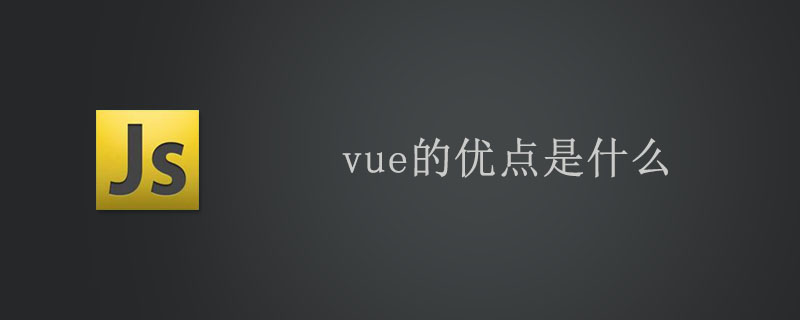Home > Article > Web Front-end > What are the advantages of vue
Vue.js is a progressive framework for building user interfaces. Unlike other heavyweight frameworks, Vue adopts a bottom-up incremental development design. Vue's core library only focuses on the view layer, and is very easy to learn and integrate with other libraries or existing projects. Vue, on the other hand, is fully capable of powering complex single-page applications developed with single-file components and libraries supported by the Vue ecosystem.

##Advantages of vue:
Lightweight framework
Focus only on the view layer, which is a collection of views for building data, with a size of only dozens of kbVue.js provides efficient data binding and flexible component systems through a simple APIEasy to learn
Developed by Chinese people, Chinese documents, no language barriers, easy to understand and learnTwo-way data binding
This is the so-called responsive data binding. The responsiveness here is not the responsive layout in the @media media query, but means that vue.js will automatically respond synchronously to changes in certain data on the page. In other words, vue.js will automatically respond to data changes and modify all data and view contents bound together based on the binding relationships pre-written by the user in the code. This binding relationship is declared with the v-model attribute of the input tag, so you may see someone roughly calling vue.js a declarative rendering template engine elsewhere. This is the biggest advantage of vue.js. It realizes two-way binding of data through the MVVM idea, so that developers no longer need to operate DOM objects and have more time to think about business logic.Componentization
In front-end applications, can we also encapsulate modules like programming? This introduces the idea of component development. Vue.js splits various modules in a single-page application into separate components through components. We only need to write various component tags in the parent application first ( (Occupying pitfalls), and write the parameters to be passed into the component in the component tag (just like passing parameters into a function, this parameter is called the attribute of the component), and then write the implementation of various components separately (fill in the pitfalls), Then the entire application is completed.Separation of views, data, and structures
makes data changes simpler, without modifying the logic code, and only needs to operate the data to complete related operationsVirtual DOM
Now the Internet speed is getting faster and faster. Many people have dozens or even hundreds of M optical fibers in their homes, and mobile phones have also started to use 4G. Press A web page is only a few hundred KB, and the browser itself will cache many resource files. So why does it still feel so slow to open a cached page that has been opened before with dozens of M fiber? This is because the browser itself has performance bottlenecks when processing DOM. Especially in traditional development, when JQuery or native JavaScript DOM operation functions are used to frequently operate the DOM, the browser must constantly render new DOM trees. This causes the page to look very stuck. Virtual DOM is the English word for virtual DOM. Simply put, it is a method that can perform various calculations through JavaScript in advance to calculate and optimize the final DOM operation. Since this DOM operation is preprocessing There is no real operation of DOM, so it is called virtual DOM. Finally, the DOM operation is actually submitted after the calculation is completed, and the DOM operation changes are reflected to the DOM tree.Run faster
Like comparing with react, they also operate virtual dom. In terms of performance, vue has great advantagesThe above is the detailed content of What are the advantages of vue. For more information, please follow other related articles on the PHP Chinese website!